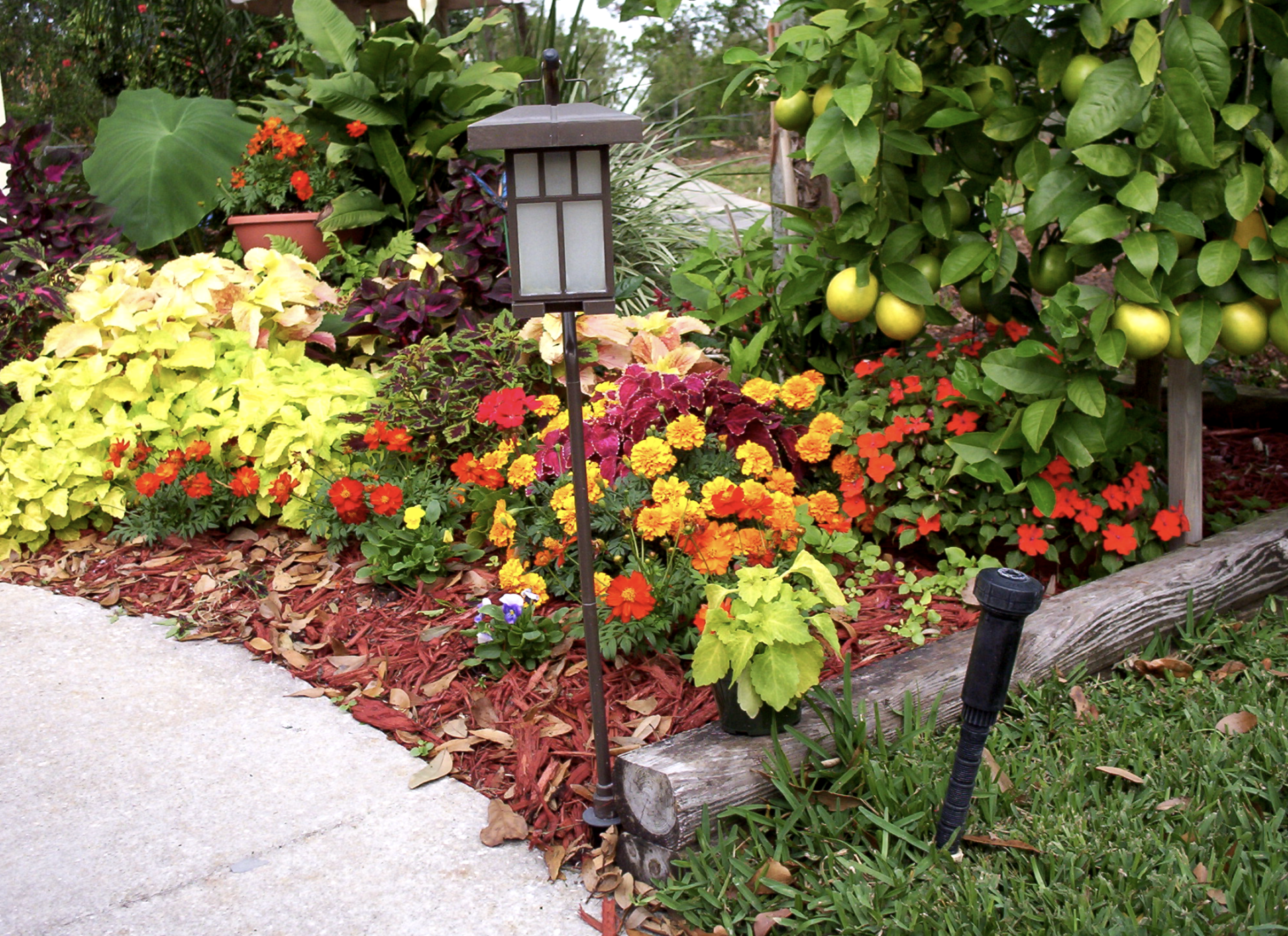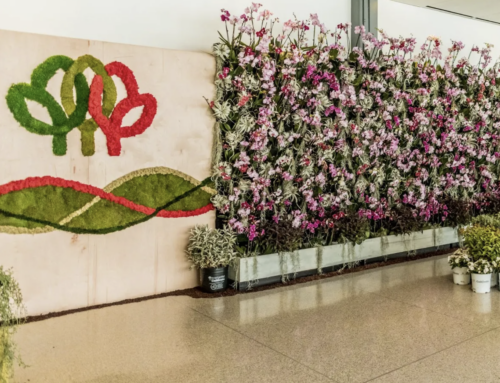Most flowering plants we select, plant, and cherish unfortunately relinquish to autumn with yellow, brown, and withered foliage instead of a bright fall color. The unsightly conditions of that departure are acceptable considering those plants gave their all when their curtain call came with bloom after bloom. Yet what if plants that flowered beautifully during the growing season actually gave a final feature as they exited the summer stage? I have been surprised over the years by those plants that come with a bonus surprise as the season winds down. Plants typically known for their flowers – such as Peonies, Hosta, Solomon’s Seal, and Oakleaf Hydrangea – can each deliver autumn color making them worthy additions to your garden.
Peonies (Paeonia) with fall color
The appearance of most Peonies nearing the fall is not a pretty sight. Black blotches, fungus, Powdery Mildew, and brown wilted leaves rule the day. There are a number of Peonies, however, with foliage attractive in the fall and highlighted below are some that merit attention.
Paeonia ‘Mackinac Grand’ (A Michigan salute to the great Mackinac Island)
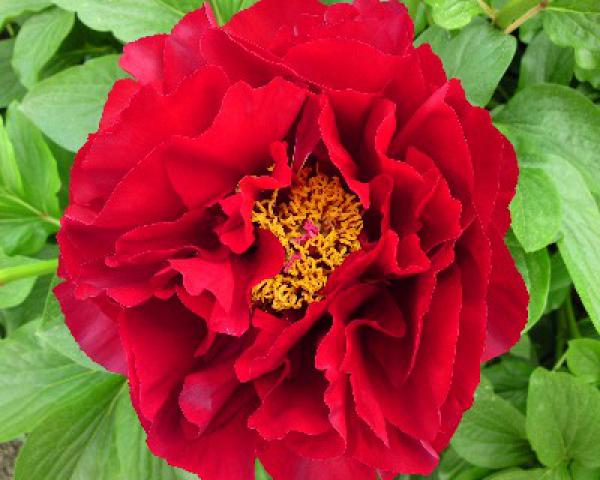
Paeonia ‘Shirley Temple’ (Has there ever been a better child actress?)
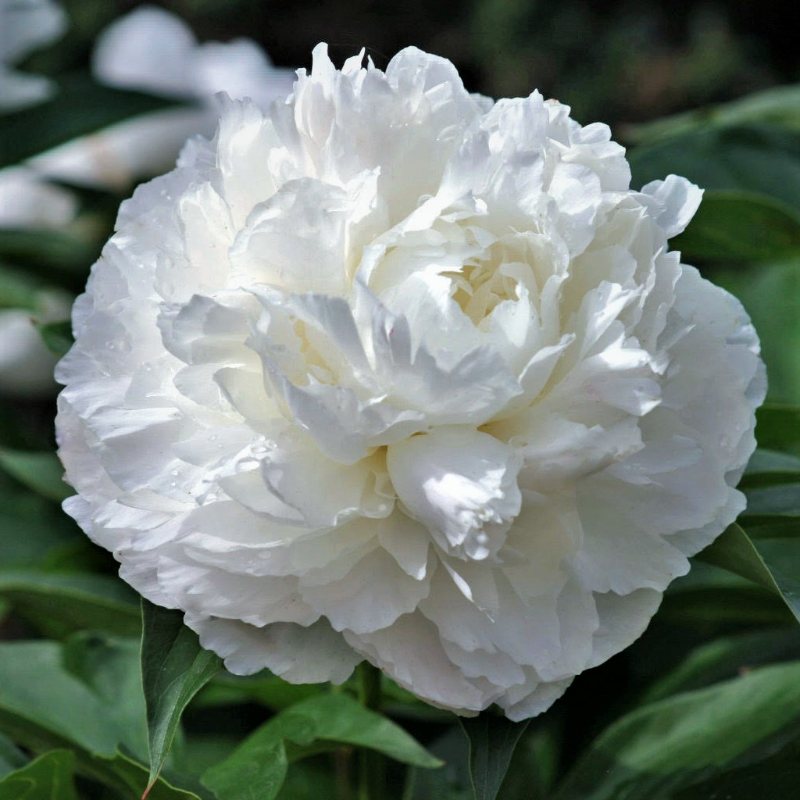
Paeonia ‘Molly the Witch’ (Wicked as the Broadway Musical)
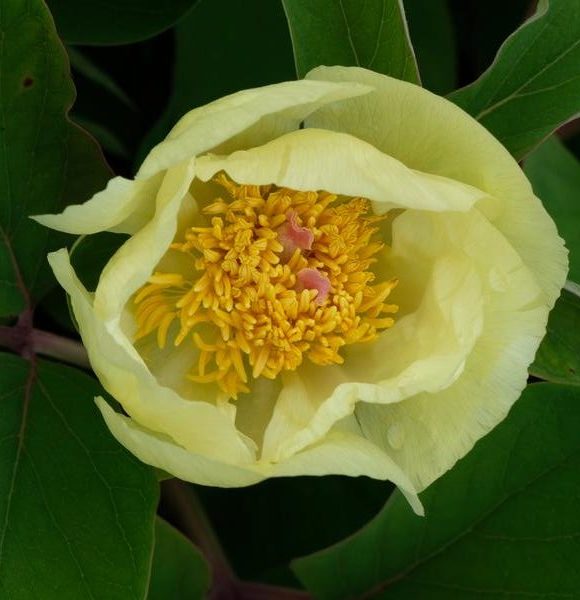
Hosta with fall interest and color
Hostas bringing color in the fall was a surprise because so many of my gardening friends are quick to whack them to the ground, and as a result, I rarely saw them past late August. Now I leave mine up and it is pleasing to see the colors develop in the large textured leaves.
Hosta ‘Remember Me’
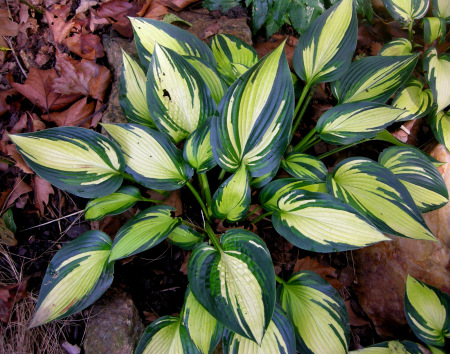
Hosta ‘Stained Glass’
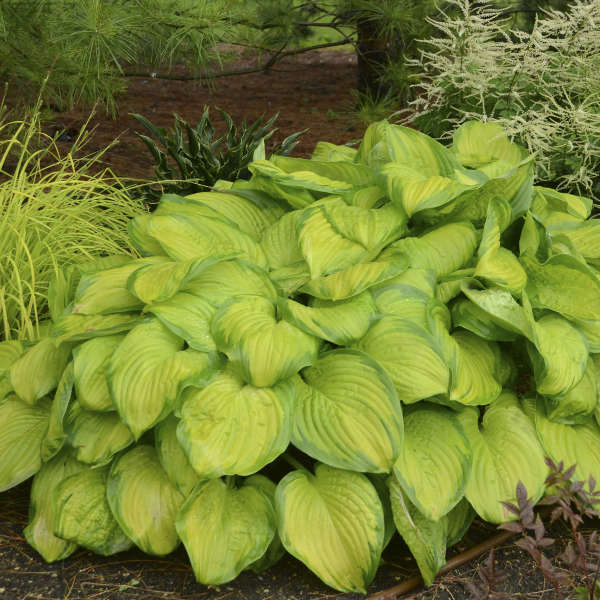
Solomon’s Seal (Polygonum) with fall color
Whether in your garden or spotted along the wood’s edge, Solomon’s Seal is a welcome addition to any shade setting. There are a variety of species used in landscapes and most have some level of autumn interest.
We have highlighted the Variegated Solomon’s seal as one of the more common and attractive Polygonums that is well-behaved and not to be confused with the invasive Japanese Knotweed. As I watched my gardens shrink and fade with the season, it was a pleasant surprise to see the golden foliage as well as steadfast stems of Solomon’s Seal through the fall months.
The compact Fred Case variety is also showing streaks of gold color. Honestly, it’s a quality I never noticed or looked for until writing this post – which prompted me to take a closer look. Truly a nice touch in the fall; little Fred makes a good case for a notable plant for autumn.
Variegated Solomon’s Seal
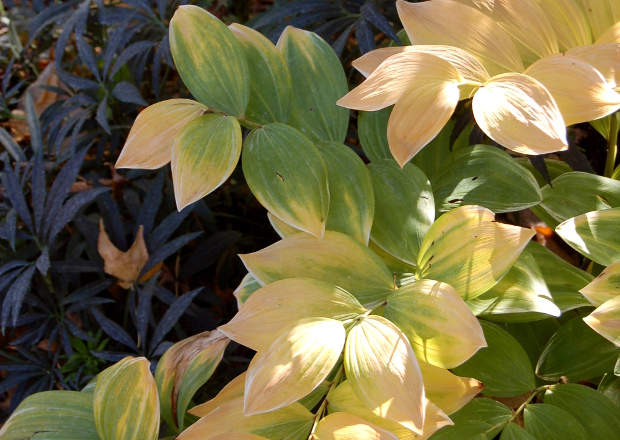
Dwarf Solomon’s Seal ‘Fred Case’
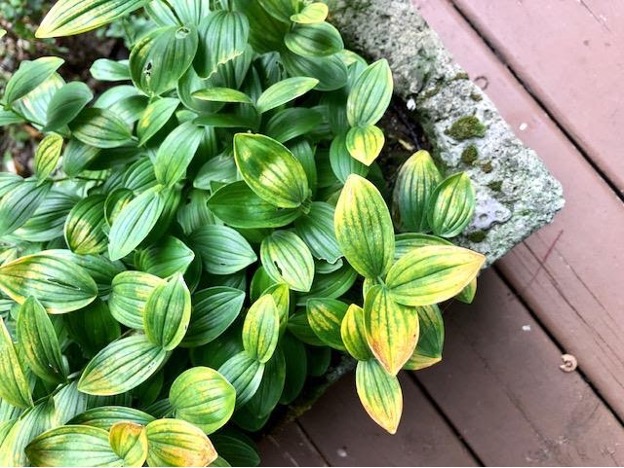
Both
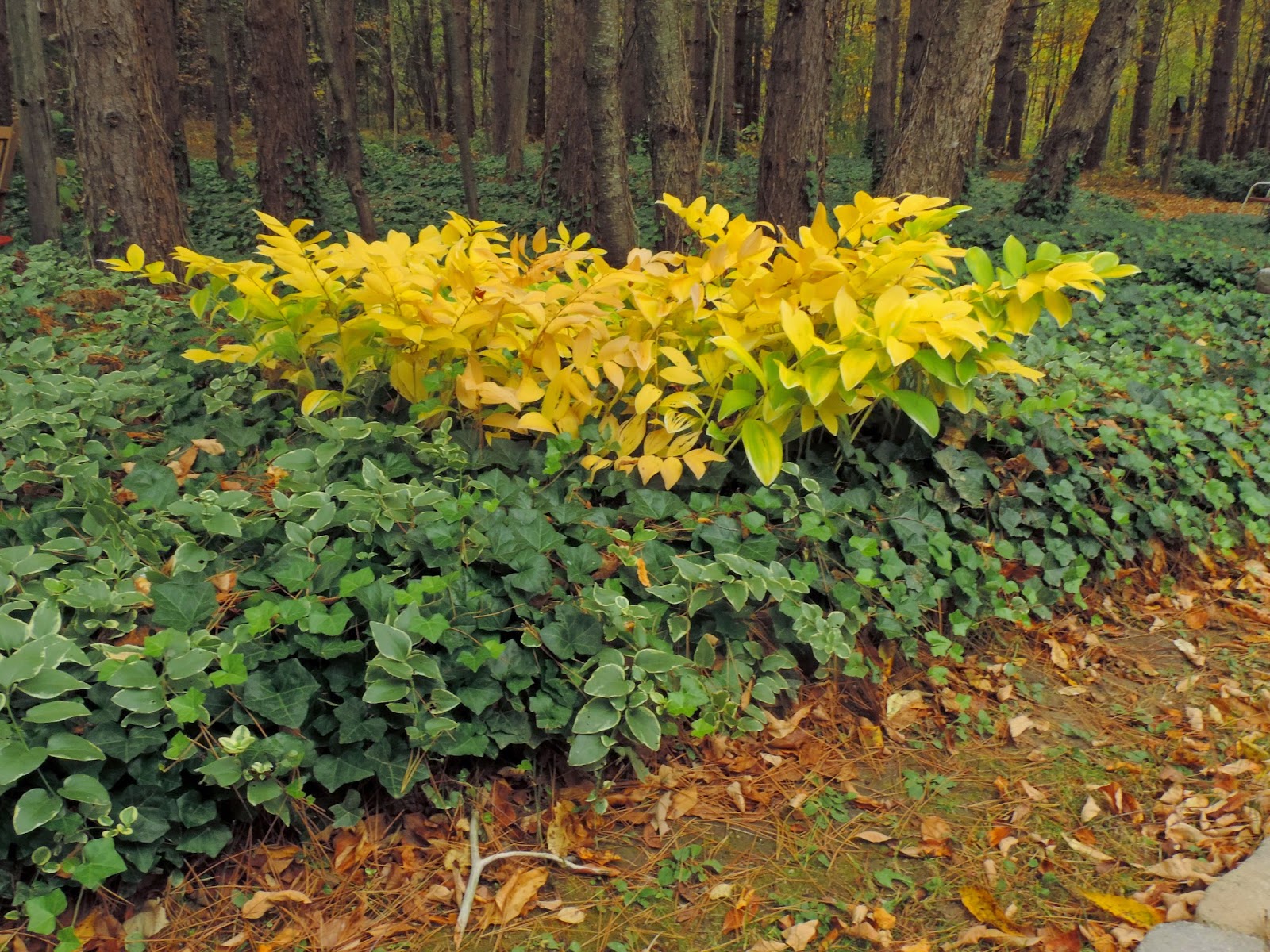
Oakleaf Hydrangea (Hydrangea quercifolia)
This large Hydrangea, an American native, with twisting stems and exfoliating bark can add substance to the shade with its dark, oversized oak-like leaves and huge conical blooms up to 1’ in length. Like the other bonus-featured plants we covered, after solid summer performance, the foliage of the Oakleaf Hydrangea turns deep maroon.
Oakleaf Hydrangea showing green & maroon areas
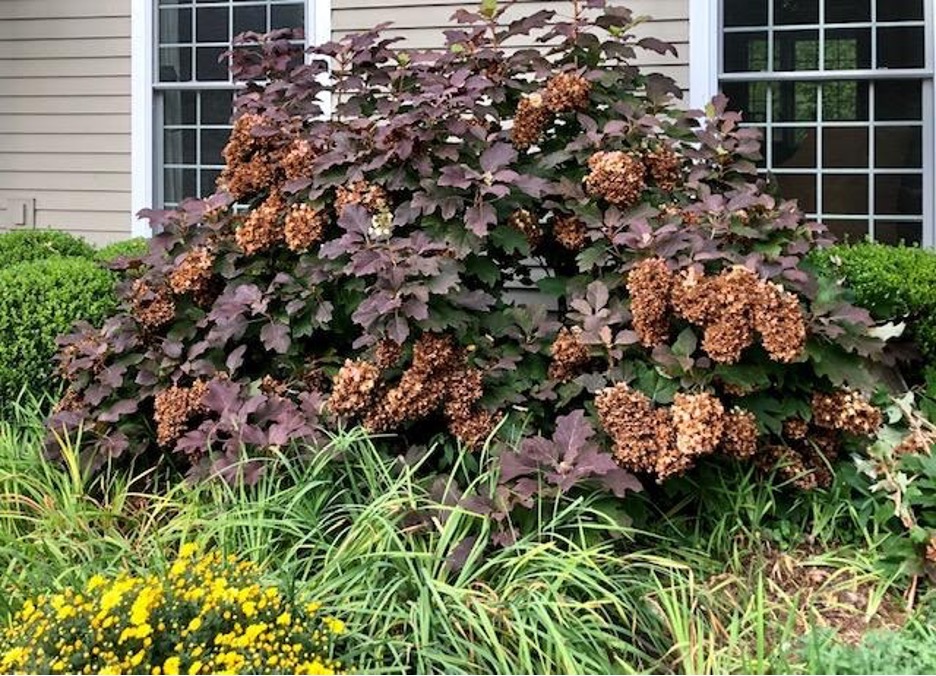
Oakleaf Hydrangea – Close up of Maroon leaves
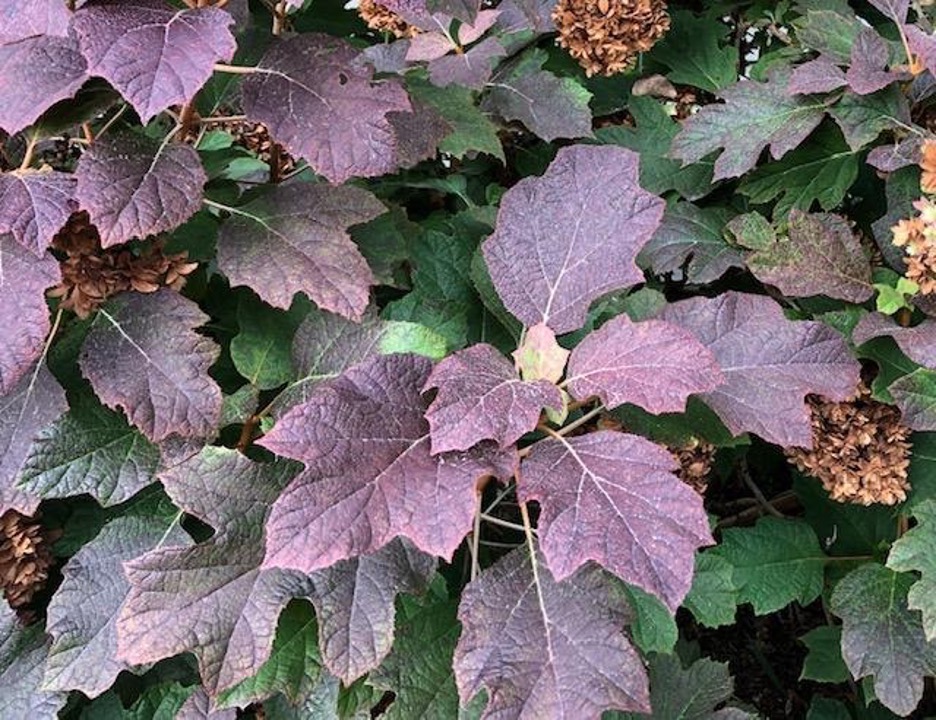
Hopefully, this is a motivator for gardeners to reconsider early autumn cut-downs and give more time for plants to wind down. Obviously, when plants are plagued with season’s end problems of fungus, mildew, wilt, and leaves that insects have left machine-gunned, cut-down is justifiable.
But let’s recognize that when we consider the overall health of the plant, it is often best for a plant to complete its seasonal cycle. That applies especially to the colder areas of the US with the end-of-season transition to winter months. Plants need time to shut down, seal off former growth ports, and go into winter dormancy. I’ve heard the comparison to leaving a summer cabin for the winter. Care is given to shut it down: turn off the water, drain pipes, seal windows, lock doors, etc. so when winter comes, it is snug, “dormant” and will keep out problems of winter. It is a fair analogy to plants: by allowing plants to complete their growth cycle, that is, give them time to brown and die-back, the plant crown or bulb can wall off winter threats as well. For some perennials, cutting off green, actively growing stems leaves a fleshy stub that invites disease that can move into the roots. Gardeners are often puzzled when perennials fail to come back in the spring and attribute it to a cold winter loss. Premature cut-downs may be a contributing factor in these cases. Also, as for the old, brown foliage, especially over the center of the plant, it has been determined for many plants, it acts as insulation protecting the crown through the winter’s cold.
When you give your garden plants a little more time to close out the season you might be surprised when they score some bonus points in the fall.
-Rob McCartney, Horticulturist
Please feel free to contact me with any questions or for more info at: [email protected]

